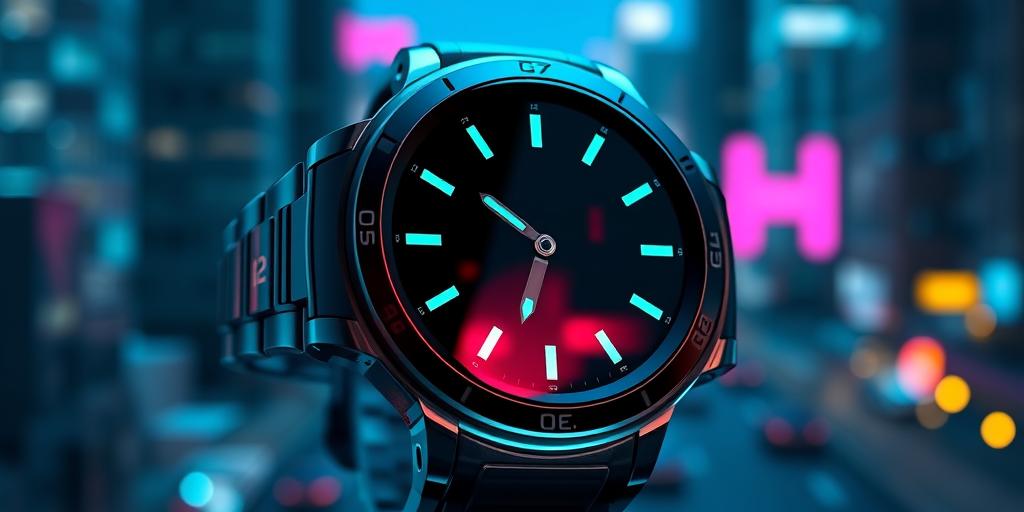How Wearable Tech Went From Sci-Fi to Everyday Life
Have you ever gazed at a futuristic movie, marveling at the sleek gadgets and wearable technology that seamlessly blend with everyday life? It’s no longer science fiction! From the clunky beginnings of early smartwatches to the sophisticated health trackers and stylish smartglasses of today, the journey of wearable tech is nothing short of amazing. This incredible evolution from sci-fi fantasy to mainstream reality has changed how we interact with the world, impacting our fitness, health, communication, and even our fashion choices. Let’s dive into the fascinating story of wearable tech’s meteoric rise!
The Genesis of Wearable Tech: From Concept to Creation
The dream of wearable technology isn’t new. Early visions of wearable computers can be traced back to the 1960s, with scientists and authors imagining a future where technology was integrated into clothing and accessories. However, the technological limitations of the time meant these concepts remained firmly in the realm of science fiction. The concept of integrating technology into clothing and accessories was a significant step forward. Early examples were bulky and impractical, far from the sleek and stylish devices we know today. Think bulky, battery-powered devices with limited functionality, not exactly the stuff of fashion trends! The evolution from concept to early prototypes and the challenges of miniaturization and power consumption tell a remarkable tale of ingenuity and perseverance. Early wearable tech pioneers had to grapple with several formidable challenges, from power source limitations to the inherent difficulties in creating compact, user-friendly devices. It was a long road to get here!
The Rise of the Smartwatch
While early experiments existed, the true genesis of the modern era of wearable tech often traces back to the development of the smartwatch. Early iterations, bulky and often resembling oversized calculators strapped to the wrist, laid the groundwork for what would become the ubiquitous device that it is today. These first smartwatches lacked the refinement and capabilities of modern versions, and were met with a mixed reception. Nevertheless, they were a vital step toward what would come later.
The Dawn of Fitness Trackers
The fitness tracker is one of the most popular segments in the wearable tech market today, and its rise has been nothing short of phenomenal. The ability to monitor your steps, calories burned, and sleep patterns has made fitness trackers a true companion for health-conscious individuals worldwide. The ability to track and monitor fitness metrics, such as steps taken, calories burned, and sleep cycles, has had a significant impact on the global fitness and health community, empowering individuals to take control of their health and well-being. But the functionality and accuracy have improved dramatically in recent years, and this progress has been a major key to its success.
The Modern Era of Wearable Tech: Innovation and Integration
Today, wearable technology encompasses a vast landscape of devices, each with its unique applications and capabilities. This rapid expansion of capabilities has been driven by a combination of factors, most notably advancements in computing technology and sensor design. But perhaps the most significant technological advancement in wearable tech has been the integration of increasingly sophisticated sensors. Modern wearable devices can detect a multitude of physiological metrics including body temperature, heart rate, blood oxygen saturation, sleep patterns, and even stress levels. But the innovation doesn’t end there. We’re seeing the emergence of new, exciting functionalities, including advanced features such as contactless payments, biofeedback applications, and even integration with augmented reality experiences. This evolution has created unprecedented possibilities for both consumers and businesses.
Smartglasses: A Glimpse into the Future
Smartglasses, once confined to the realm of science fiction, are slowly but surely becoming a reality. While still in their early stages of development, these devices offer a fascinating glimpse into the future of wearable technology. Their potential use cases are vast, ranging from hands-free communication and navigation to augmented reality overlays providing real-time information about one’s surroundings. Yet this technology faces significant challenges, and the development of smartglasses has faced various hurdles, particularly related to battery life, computing power, and user interface design. Innovations in these areas are crucial for the wider adoption of smartglasses.
Beyond the Wrist and Beyond the Glasses
Wearable tech is no longer limited to watches and glasses. Smart clothing, embedded with sensors and microcontrollers, is becoming increasingly sophisticated, offering features like temperature regulation, health monitoring, and even augmented reality interactions. The integration of wearable tech into other devices (like smartwatches and fitness trackers) is expected to improve user experience and convenience, facilitating better health management and lifestyle tracking. And innovations in fabric technology and energy storage will further boost the potential of smart clothing. As research and development continue, we can expect even more creative applications that will further blur the line between technology and everyday life.
The Future of Wearable Tech: Trends and Predictions
Predicting the future is always challenging, but several trends point towards exciting advancements in wearable technology. The increasing integration of artificial intelligence is one of the most significant trends in wearable technology. AI-powered devices can learn user preferences and behavior, providing increasingly personalized experiences. The convergence of wearable tech and other technologies, like virtual and augmented reality, will reshape the way we interact with the digital world. And greater emphasis on data privacy and security is crucial, particularly in a world where wearable devices gather an increasing amount of personal information. The adoption and implementation of strong security measures will be paramount to maintain trust and ensure the privacy of users’ data. The future of wearable tech is bright and holds the promise of improving lives across multiple sectors. But it also demands that we thoughtfully consider the ethical considerations that come with increasingly sophisticated wearable technology.
Health and Wellness: The Next Frontier
The health and wellness sector stands to benefit the most from advancements in wearable technology. Improved sensors and AI algorithms will allow for more accurate and personalized health monitoring, enabling earlier diagnosis and prevention of diseases. The integration of health data with existing healthcare systems, such as electronic health records, could facilitate better patient care and enable early detection of health issues. These developments will revolutionize healthcare, leading to more personalized and effective treatment plans. The rise of wearable health technology is indeed a significant stride towards a future of proactive and preventative healthcare.
Wearable tech has truly revolutionized our lives, and it is just the beginning. This technology’s potential to transform many sectors is huge. Don’t get left behind—jump into the future of wearable tech today!













